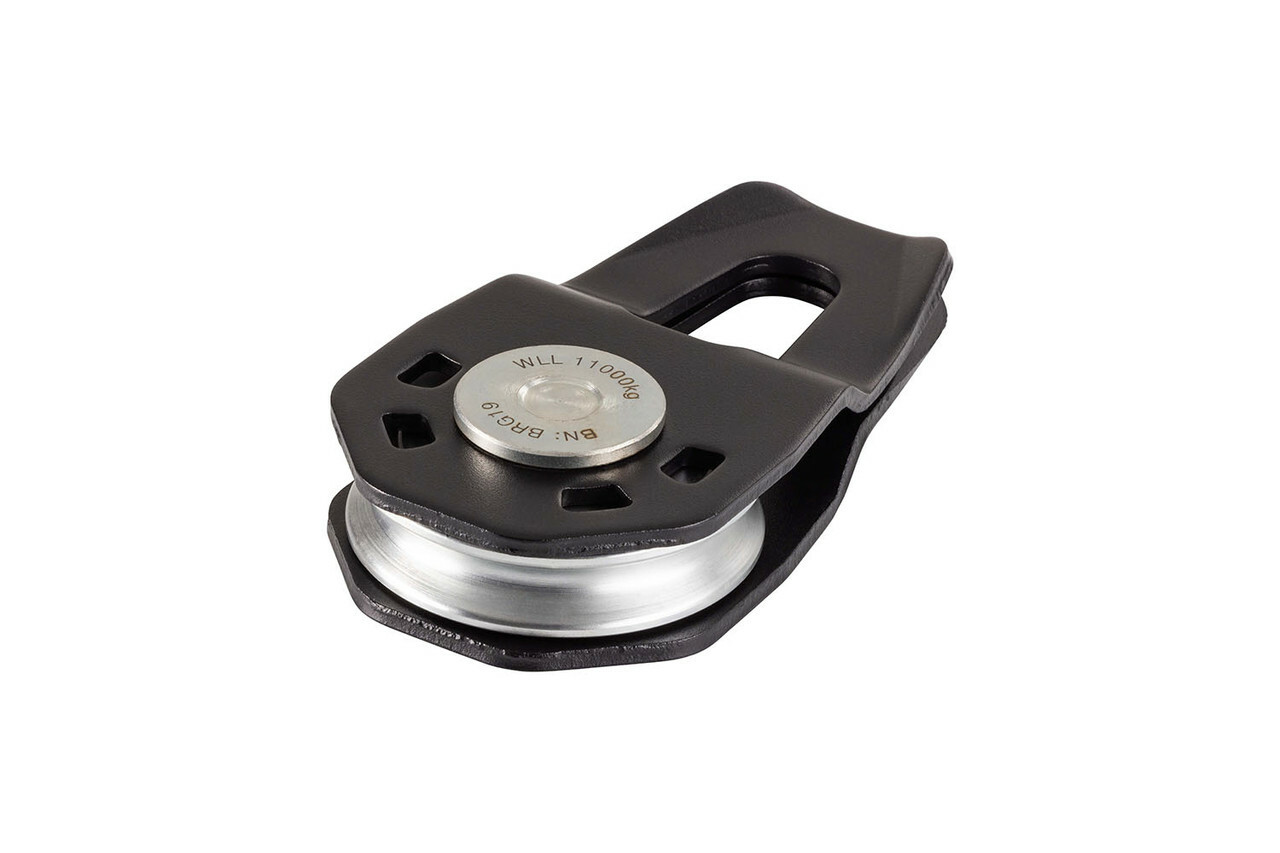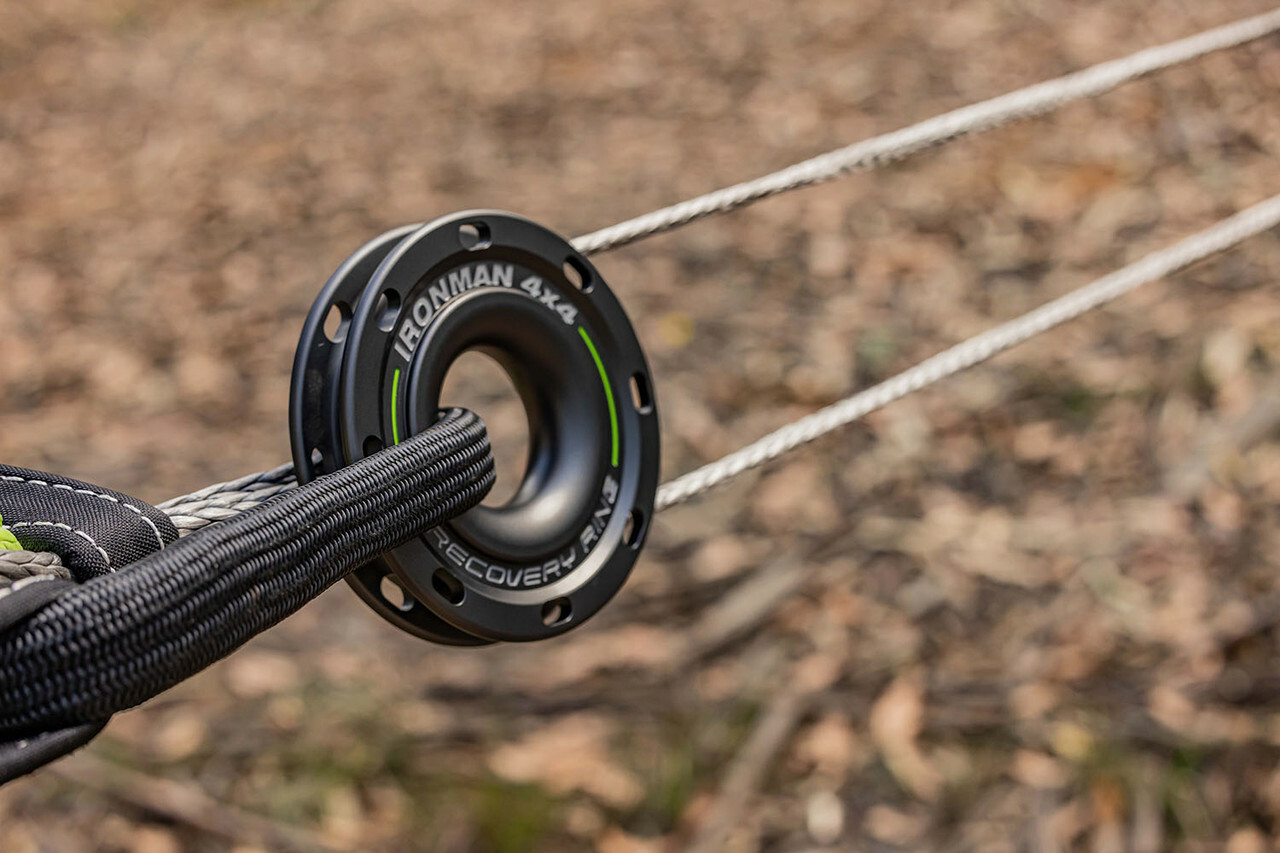What Are Snatch Blocks And Why Are They Important?
Your vehicle’s winch is an excellent recovery tool, but one accessory in particular, the snatch block, can help you truly get the most out of your winch’s power. Sometimes also called a pulley block, a snatch block can let you maximize your winch’s pulling power and versatility. Let’s look at the snatch block, how it works, what it does, and different styles.
What Is a Snatch Block?
A snatch block is essentially a pulley. It can be used for a variety of functions including winch line direction changes and multi-line pulls. They are rigged up using a tree trunk protector and a shackle. Once rigged up, the winch’s line passes around the snatch block’s pulley wheel, letting you either change direction or double back to your vehicle or an anchor point. The latter rigging is called a double-line pull. We’ll get into that in a moment. First, let’s look at directional changes.
Snatch Blocks: Directional Changes
When you have a winch, you optimally want to pull in a straight line. However, sometimes your rope needs to go at an angle to reach an anchor point or a vehicle needing recovery. This is where a snatch block can come into play.
Basically, you run your winch line out straight to the snatch block. The snatch block is rigged to a suitable anchor point with a strap and shackle, or another vehicle with a shackle, and the winch rope then bends around the snatch block’s pulley wheel. This lets you change the winch rope’s direction. Technically, this is a single-line pull with a rope redirect. There is no increase in power or pulling capacity, you’re simply changing the rope’s direction to recover the stuck vehicle.
This basic technique is one of the most useful and versatile winching methods around and is a key reason why you’d need a snatch block. But that’s not the product’s only trick.
Snatch Blocks: Multi-Line Pulls
The snatch block’s other fantastic function is its ability to conduct multi-line pulls. The most common is the double-line pull. This technique allows you to utilize physics to increase the winch’s pulling capacity. The winch isn’t really pulling any more than its rating, but through mechanical advantage, the snatch block lets you nearly double your capacity—ideal for those very difficult pulls. However, there is a catch: it uses twice the amount of rope and is half as fast when winching.
To perform a double line pull, first rig up your snatch block to a suitable anchor. Next, run a length of line out to the snatch block. Put the rope around the pulley, then head back to the front of your vehicle, making sure your bumper is up to the force of a double-line pull. Again, you’ll need twice as much line as a single-line pull. So, if it’s 25 feet to the snatch block, you’ll need at least 50 feet for a double-line pull. Always make sure to leave enough line on your winch, too. (See your operator’s manual for requirements.) But, if you have a 12,000 lb. capacity winch, you can now pull nearly 24,000 lbs.
You can multiply this technique to do triple, quadruple, or even more line pulls, so long as you have enough snatch blocks, shackles, straps, and suitable anchor points. Each time you do this, you multiply the capacity, need more rope, and slow the line speed further. But the double line pull is the most commonly used and needed.
Always be sure to follow proper winching safety techniques, too.
Types of Snatch Blocks
There are a variety of snatch blocks on the market. Ironman 4x4 offers two styles: the traditional swing side, and the snatch ring. Both do the same thing, but each has pros and cons.
The Ironman 4x4 Snatch Block (24,200 lbs.) unit is the swing-side variant. It has a capacity of 24,200 lbs. It’s compatible with a variety of winch lines up to 0.6” (15 mm) and can be used with steel or synthetic rope. However, if you use it with steel line, do not use it with synthetic rope afterward, as knicks can form on the block’s wheel that can damage the synthetic rope. One con: they can be heavy and bulky.

Ironman 4x4’s Recovery Snatch Ring (24,200 lbs.) is a lightweight and simple snatch block-style device. For use with synthetic rope only, the ring rotates on a soft shackle that is anchored to a strap. Minimalist and easy to use, the Recovery Snatch Ring is a new tool for doing an old job. The cons? They’re not for use with steel rope and must utilize a soft shackle.

A Must-Have Accessory
If you have a winch, a snatch block is a must-have tool, as its usefulness is off the charts. You’ll need to make sure you have a tree trunk protector for rigging and a shackle (a soft shackle if you’re using the Recovery Snatch Ring). This combination of gear will help you—or others—get out of stuck situations more easily.

